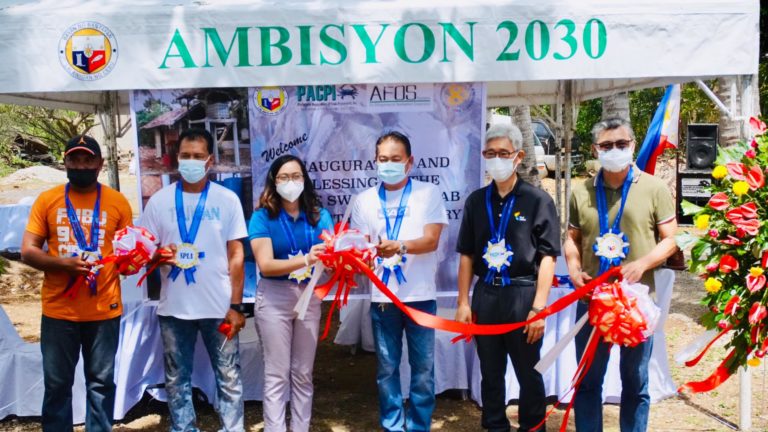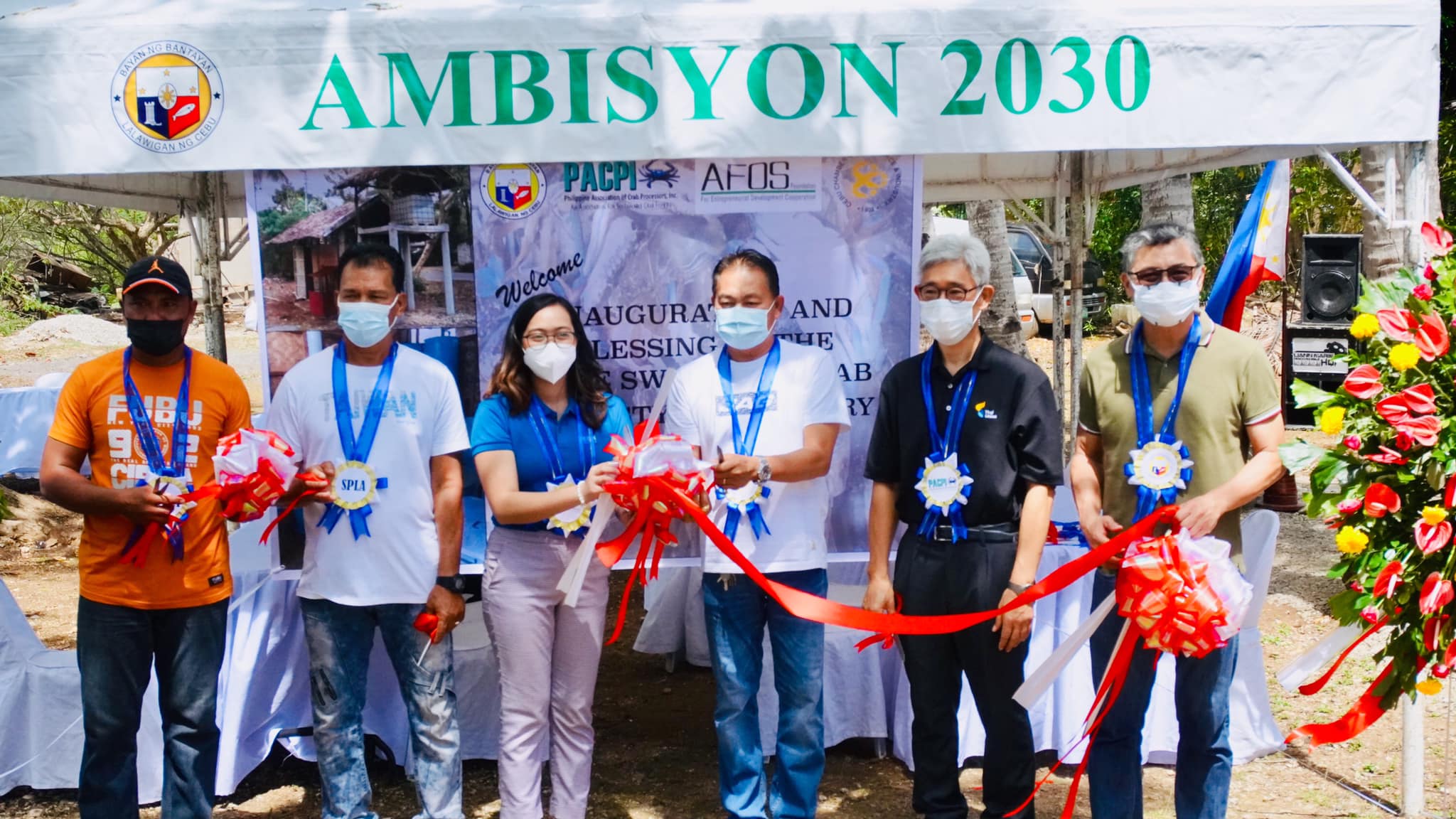
The Local Government Unit of Bantayan Island, Guiwanon has reached a new milestone for the establishment of Bantayan’s Thai-style blue swimming crab hatchery.
The Bantayan LGU and Cebu Chamber of Commerce and Industry-Bantayan Island Chapter (CCCI-BIC), the Philippine Association of Crab Processors Inc. (PACPI), the AFOS Foundation FISH Visayas Project, the Restoration and Rehabilitation Management Unit, and barangay captains from the three People’s Organizations (POs) joined forces to set the formal opening of Thai-style blue swimming crab hatchery in Guiwanon, Bantayan Island on February 24, 2022.
The event was marked by a ribbon-cutting ceremony, a message of support from the partners, and a blessing for the building. Over ₱3-Million has been contributed by each of the partners for the project. Meanwhile, the building was constructed and paid for by LGU Bantayan through Mayor Arthur Despi. PACPI has four staff focused on the monitoring and operation of the BSC hatchery in Bantayan, while the LGU is currently employing two staff focused as well on the BSC hatchery. Lito Maderazo, CCCI-BIC’s President, has also been very hands-on with the setup of the hatchery, donating many of his own equipment such as water tanks and blue drums for the said operation.
Blue swimming crabs, locally known as “alimasag”, provide over two million pesos a year to the local economy and employ more than 20,000 Filipinos. Hence the launching of this project is a positive jumpstart to further the booming economy of the locality. Moreover, this venture can also be the answer to the endangering scarcity of blue crabs in general. According to a 1999 study, blue crabs were being overfished, and because of commercial forces, the species is being pushed to unsustainable proportions. The local economy and fishermen’s livelihoods might be jeopardized if the crabs have left in this hazardous state.
Global food production relies heavily on the production of seafood, which is an important source of protein for many nations. Part of the functions of the crab hatchery is to evaluate and strategize on how to multiply the species without risking the species’ lives. Furthermore, they can assess the implications of eating and detecting foul odors. It is necessary to keep the crabs in the aquarium until they can reproduce. In the hatchery, care is taken to develop every stage until hatching and releasing.
Thai-style hatcheries are more lucrative than holding cages because of the higher quantity of larvae generated by Thai-style hatcheries.
Mayors, MPDCs, MAO Officer, and MAO Staff in LGU Ayungon and LGU La Libertad conducted post-calamity inspection and assessment to AFOS FVP sites in Ayungon and La Libertad.
AFOS met with the Mayors, MPDCs, MAO, and MAO Staff to assess the devastation of Super Typhoon Odette in the various interventions of AFOS FVP sites. They have collected multiple pictures of damaged areas and project interventions, data, and information of beneficiaries whose fishing equipment was severely damaged by the typhoon.
The main challenge of the activity is to come up with a proposal to submit to AFOS Foundation for assistance, so the fisherfolk are given the opportunity to bounce back and go back to their main livelihood, which is fishing. The activity gave the stakeholders the opportunity to ask for support and assistance for rehabilitation and rebuilding their lives. Odette was classified by the US as a super typhoon when it hit Negros Oriental that brought devastation to the province.
Super Typhoon Odette left Negros Oriental with 51 people dead, 26 people missing, and injured more than 70 individuals. On December 17, 2021, the eye of Typhoon Odette, with the international name Typhoon Rai, arrived in La Libertad, Negros Oriental. It had a top wind speed of 175 km/h with gusts of up to 240 km/h near the center. Apart from Negros Oriental, various Central Visayas and Mindanao areas have been severely impacted.
During the storm, the northern portion of Negros Oriental, including Ayungon and La Libertad, was the most brutal hit. Rivers were murky, and torrents of water erupted and washed away surrounding homes. According to the Philippine Disaster Risk Reduction and Management, the initial projected total damage in the province cost 600 million pesos.
Many places have been without water, electricity, internet, and even telephone signals. People didn’t have enough potable water, and they could not reach their family members.
Moreover, the typhoon has destroyed more than one-third of the province’s businesses, farms, and residences. Before the typhoon, the province has increased livestock, agriculture, and aquaculture industries up to the third quarter of 2021.
The national government has promised 2 billion pesos to assist inhabitants of Visayas and Mindanao that Typhoon Odette has displaced. According to the National Grid Cooperation, restoring stable energy in some places might take two months. President Rodrigo Duterte has directed government agencies to “use all available government assets” to assist those affected by the cyclone.
Aside from the problems left by the typhoon, everyone still needs to observe health protocols due to the COVID-19 pandemic, making relief operations even more challenging. Aside from the supplies of face masks, the LGUs also have to make sure that the COVID-19 vaccines are safe.

